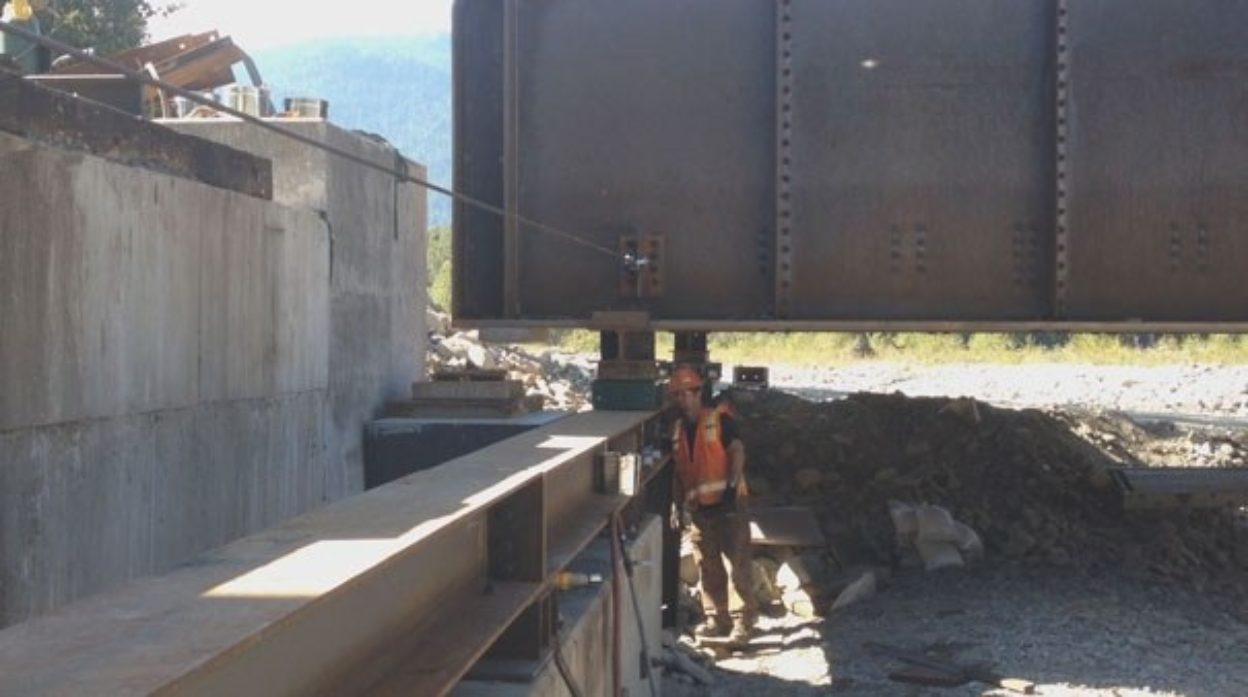Hilman OT/NT/T Series Rollers/Skates: Roll with the Bridges
A rail bridge required replacement due to ageing as well as the future plans for heavier freight trains/locomotives intended for the rail track which the existing bridge could not safely carry. Bridges over waterways are susceptible to corrosion damage; this vulnerability is particularly predominant over salt water crossings. This rail track bridge had experienced years of rust, along with wear and tear stresses.
As this particular bridge was positioned over a fresh water river - subject to seasonal high water level increases and/or flooding, the customer running the project planned the bridge replacement for the driest time of the year when water levels were at their lowest. This was in order for the rocky river bed to be utilised to its maximum working potential.
The customer was an experienced bridge construction engineer and in order to replace the old railway bridge and place the new bridge in position, he knew they could perform both tasks in succession. With the use of load rollers, roller guidance systems, winches for each pair of rollers (front and back of section) and suitably rated guide tracks, they were able to roll the old bridge out and roll in the new bridge on the same track length. The bridge was designed in two sections, which was removed and replaced with the two sections of the new bridge.
By utilising two sets of the Hilman OT/NT/T Series Rollers - which were capable of handling the heavy load of both bridges, savings were made by not having to purchase four sets for the old bridge roll-out and new bridge roll-in. The Hilman Accu-Roll Guidance System was chosen for use with the rollers as its purpose is to better integrate the roller with uniform track, for maintaining positive alignment during a move. The combination of low friction and accurately guided rollers is advantageous in applications where the rollers are required to travel over great distances and/or the final placement requires precision.
Clearance between each bridge section and the abutment was minimal and if the load rollers were not guided in-line, the bridge section could have moved off course, resulting in jarring or even jamming. Even with the two winches used to pull the bridge sections out and in, the speed of each winch needed to be monitored and controlled so that each section was pulled across equally.
Many factors affect the rolling resistance of which different coefficients of friction need to be applied, these include:
- Surface type to be rolled across
- Surface level/inclination
- Load rollers manufacture material
- Load rollers diameter
- Lubrication of rollers
Hilman Load Rollers, along with accessories like the Accu-Roll guidance system are proven solutions for road and bridge construction, especially change-out operations such as rolling-in and rolling-out of precast sections and many more applications.



